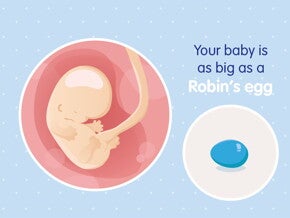
Stage 1: Introduce pureed textures
This step usually begins with iron-fortified smooth baby cereals (mixed with cooled-boiled water or breast milk), and other iron containing foods including pureed meat and fish. Vegetables, fruits, and dairy foods can then be introduced, made into a smooth consistency using a baby food processor, hand-held food processor or blender. Start with a few mouthfuls once or twice a day after breastfeeds. Slowly increase the portion to about a quarter of a cup as your baby tolerates and shows signs they want more.
Follow the right process
There is much debate on what to feed your child and in what order. Australian recommendations suggest starting with iron containing foods, including iron-fortified infant cereals, pureed meats, poultry and fish (all sources of haem iron), or cooked tofu and legumes. After this, the order in which you introduce different healthy foods or the number of new foods introduced at any one time doesn’t really matter.
Monitor for signs of intolerance and allergy
One in five children in Singapore are at risk of developing allergies, even without a family history of allergy, and there is much debate as to why this is happening. The current recommendation is not to delay the introduction of any highly allergenic solids, however, to introduce foods one at a time to help monitor for reactions to foods. If your baby develops a rash, swelling, diarrhea or vomiting after an introduction of a food, they may be intolerant or allergic to that food. Reactions can be mild or severe and may happen within minutes or take hours after a food has been eaten. If you suspect your baby has reacted to a food, seek medical advice as it must be investigated properly.
Stage 2: Introduce lumps
A month or so after the introduction of purees, you can start experimenting with soft lumpy foods. Add well-cooked barley or beans to their meals; use a potato masher to mash fruit and vegetables instead of a blender or food processor. As most babies don’t have teeth yet it is important to keep the lumps soft. The lumps help your baby to develop chewing skills and develop tongue strength which adds to the development of speech. Soft fruit like avocado and banana are instant baby foods that only require a little mashing.
Stage 3: Finger foods
By ages 8 to 10 months, most babies can handle small portions of finely chopped finger foods, such as soft fruits, pieces of steamed vegetables, egg, cheese, soft meats, and fish. As your baby approaches their first birthday, mashed or chopped versions of whatever the rest of the family is eating will become your baby’s main fare. Milk feeds are still needed in between meals.


















